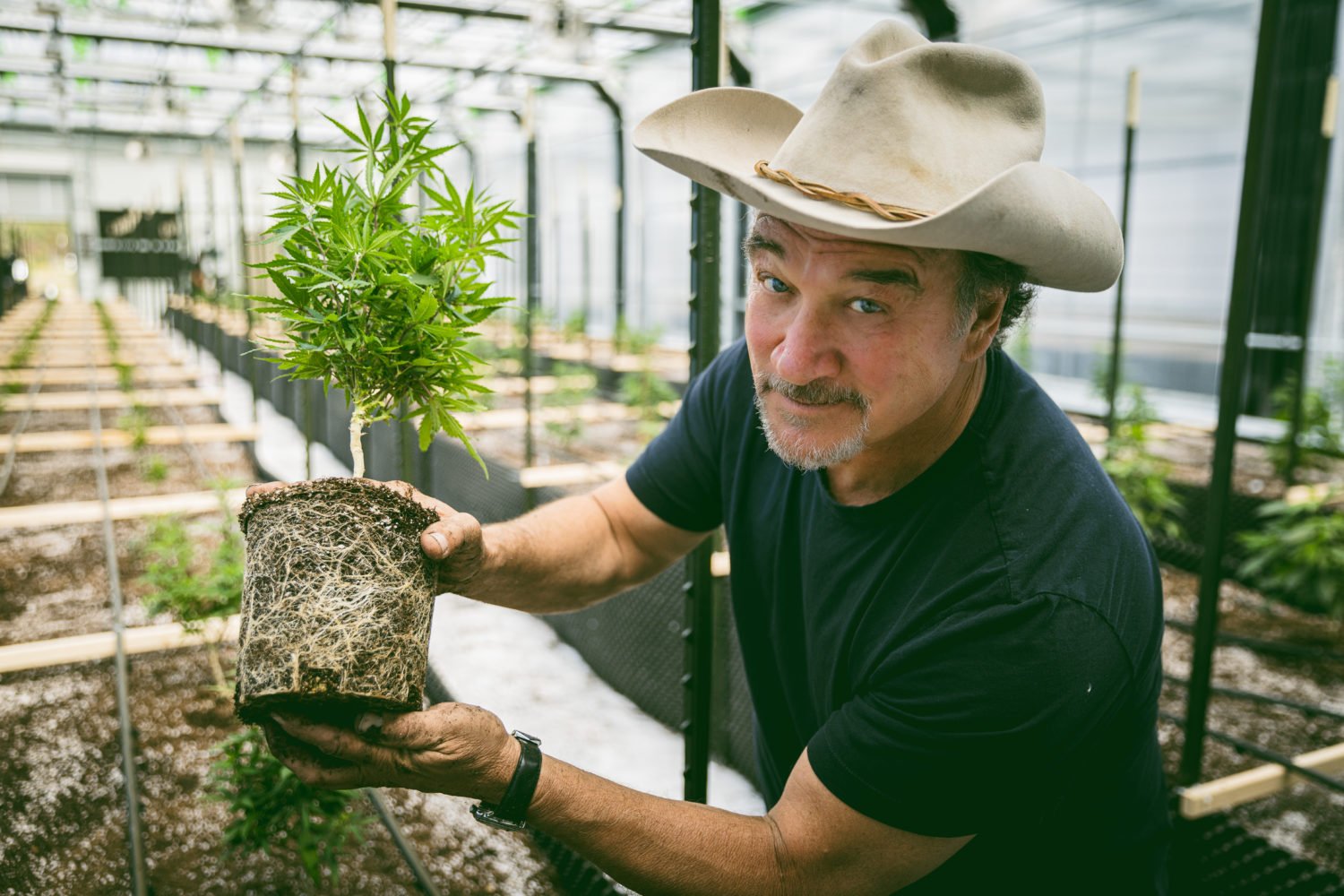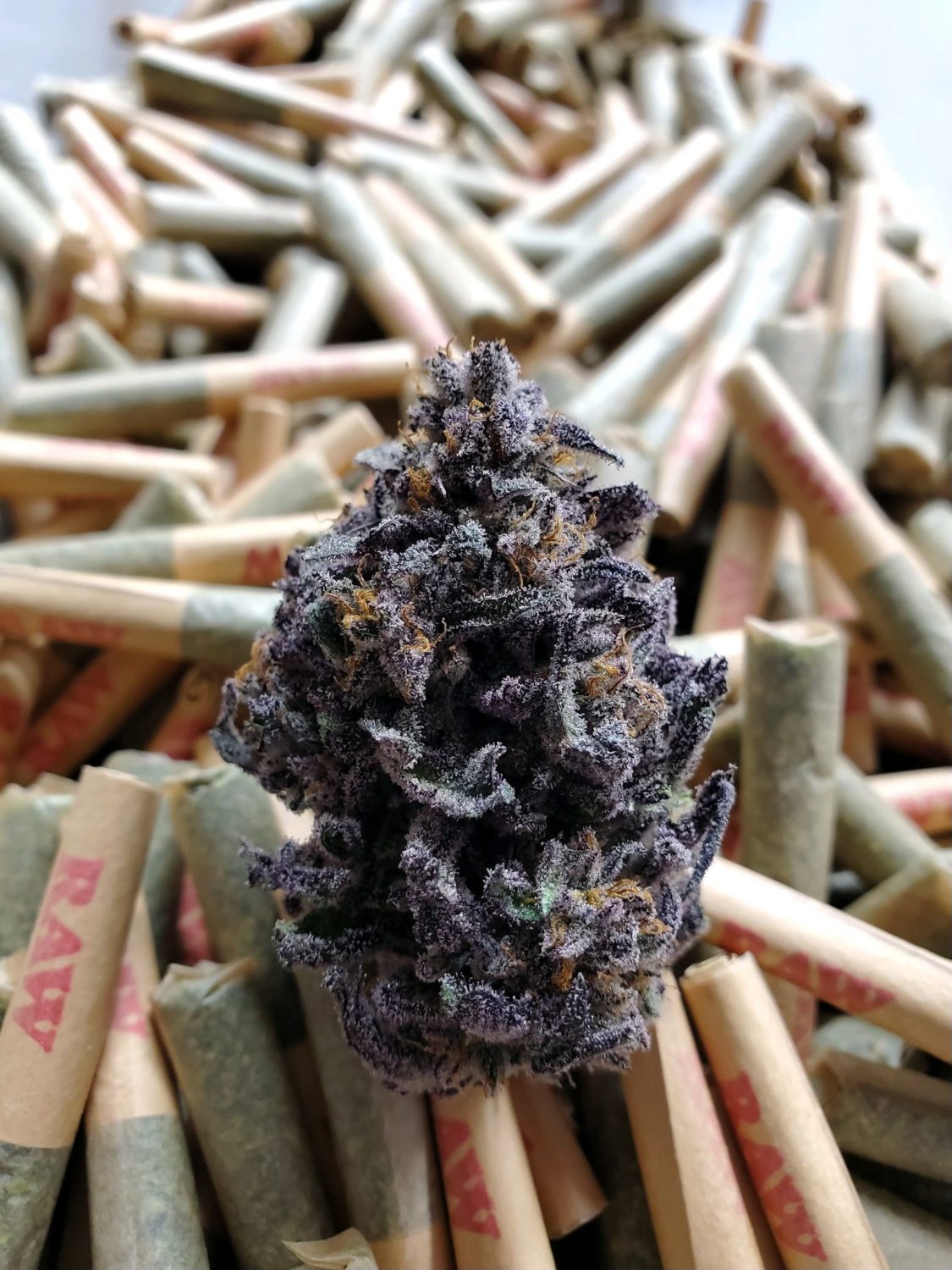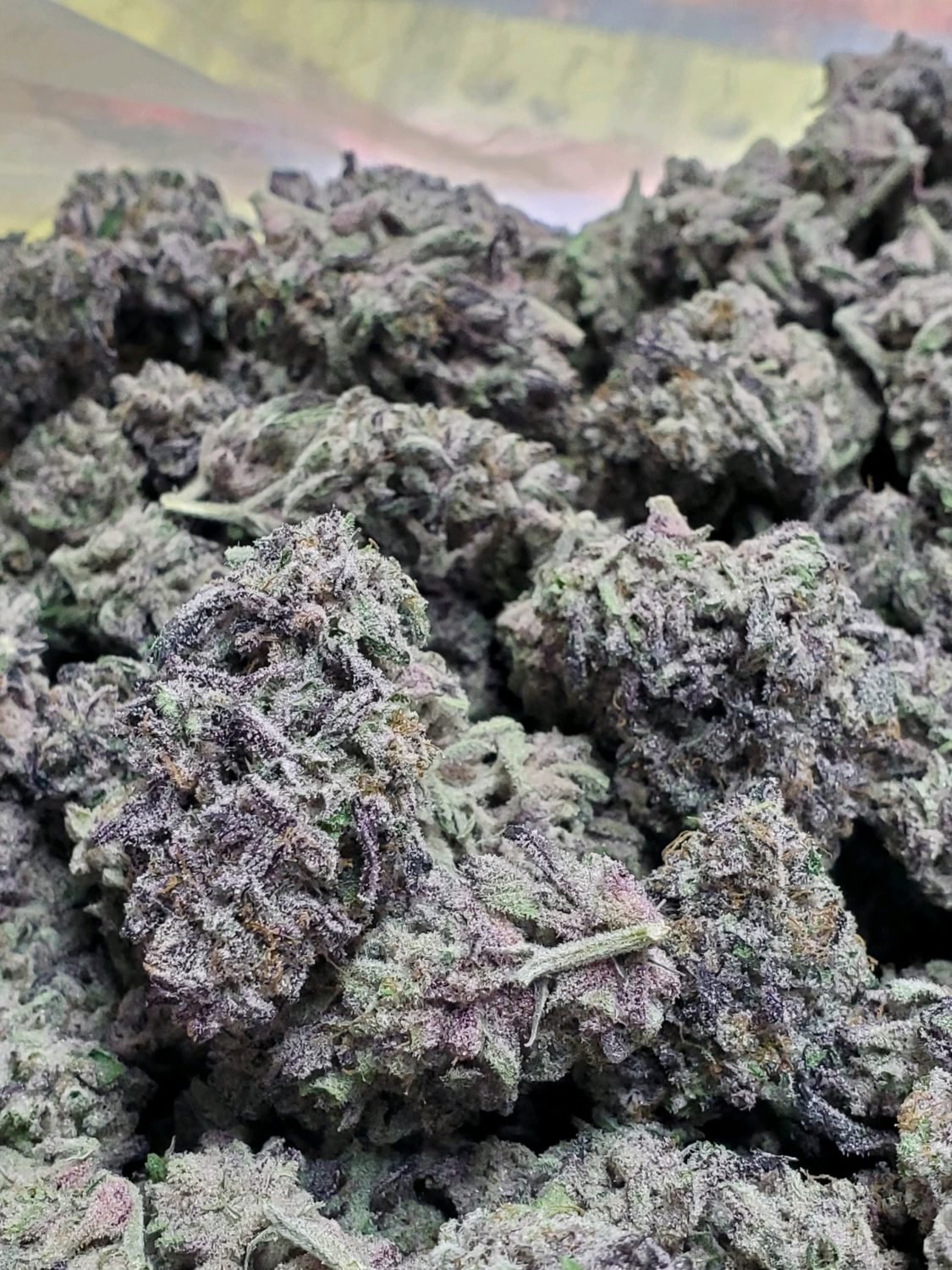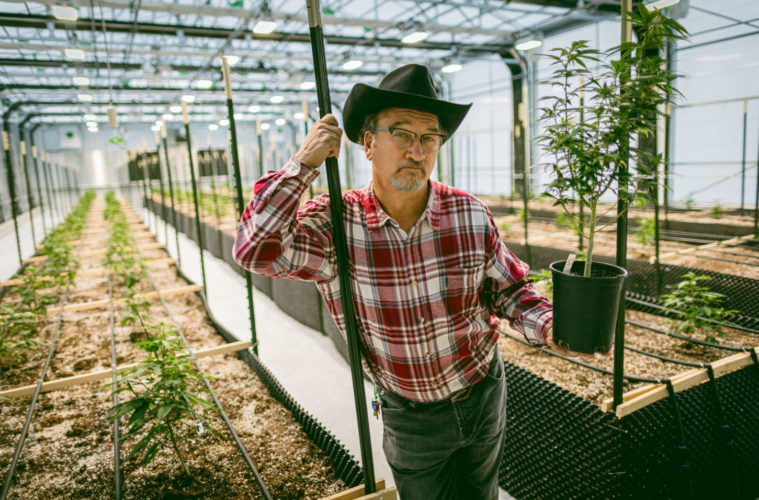We caught up with Jim Belushi to talk about watching the market evolve over his almost six years cultivating cannabis in Oregon, ahead of the premiere of Growing Belushi’s second season on Discovery next week.
While most of the time we think of celebrity cannabis as some kind of marketing collaboration, Jim Belushi has been in the dirt for years. While other names of note jumping in the space might explain all the things they looked at trying to curate their new cannabis line, Belushi grew his.
From his perch just north of California’s northern border, he’s watched the maelstrom of the last few years cut down many small farmers. He’s been able to persevere through branding, good cuts, and reasonable production quotas. But it’s bad out there.
The weed is always first and foremost here at L.A. Weekly, and Belushi was more than happy to talk about his personal evolution understanding the ecosystem of commercially viable genetics of the last few years. Without that key ingredient, you won’t move product in the flooded marketplace. But there was so much we had to get through just to remind ourselves why they are so critical.

Belushi in one of his greenhouses. Photo courtesy of Discovery.
“Right now, California, Oregon, Oklahoma and many other states are experiencing a glut and the price of the pound has gone to $350 in some places here in Oregon, and the price of a pound in Massachusetts, New York and Michigan is still $2500 to $4000,” Belushi said.
Before we moved on to genetics, Belushi further noted the fact that the overabundance of cannabis is on both sides of the market, legal and not. Much of the talk about the underground market in recent years is how many people in both Oregon and California have to play both sides of the market just to survive the times.
“It’s sad, especially in California, because that state government… they don’t understand the industry,” Belushi argued. “The ego that they don’t go to, like, ‘oh, so Colorado how did you do it? Oh, Oregon, you do it?’ You know they want to do it themselves and they’re just making it horrible for the farmer. Horrible for the dispensary. I don’t even have my brand involved in that state because it’s such a hot mess.”
Belushi isn’t some mega operation. He’s producing just south of 1,500 pounds a year in his greenhouses and striving for quality. He’s watched people who had hoped to do it with a similar ethos have trouble making it.
“It’s just very, very costly,” Belushi said, “Distribution is expensive. Manufacturing is expensive. And then the taxation of the farmer and the taxation of dispensaries makes the profit margins very thin. Farmers can’t even make it.”
From there we circled back to the weed Belushi is growing in hopes of not joining those who haven’t made it through the implementation of legal markets over the last eight years. Having the best cuts makes all the difference in the flood.
“Because there’s so much grass out there. The genetics are gonna make the difference, the breeding and the genetics,” Belushi said.
For many, it’s the time of the year when they start experimenting with new genetics. People don’t want to commit to anything that isn’t going to be exceptional, so they’ll use winter stress tests ahead of planting their big summer crop to see what’s the most viable.
Belushi just wrapped up a hunt of some South American genetics. While exotic, you don’t tend to see a lot of those landraces because they take a bit longer to grow. ”I just harvested my Colombian strains that we went and got in the last season of ‘Growing Belushi,’” Belushi said. The lineup included Santa Marta Gold and Punto Rojo. In his quest to produce viable medicine, Belushi was particularly excited about the 1 to 1 CBD/THC ratio of the Santa Marta Gold.

Santa Marta Gold
A big addition to Belushi’s lineup came from Ryan Calamia at Radio Ridge Nursery. Belushi was particularly excited to fill out a greenhouse with Radio’s work. He said Radio blew up his DMs to show support and wanted to gift him some gear. Now they’re growing strong.
But Belushi understands sometimes you need those hitters that pay the bills when trying to experiment with new stuff. For that he relies on Black Diamiond OG. His gassiest offering.

Black Diamond OG
“It’s so beautiful. And by the way, my veterans in Oregon really liked it,” Belushi noted of his prize OG. “I know guys that are paralyzed, the waist down, chest down, and they have these uncontrollable spasms. They love the Black Diamond. It stops their spasms.”
Belushi also runs a dense Cherry Pie pheno he calls The Marriage Counselor. Belushi said it comes in at about 19%, but is loaded with a ton of terpenes.
Belushi believes places like The Emerald Triangle and Southern Oregon will be the great international cannabis regions of the future. But there will be hiccups, just getting it over state lines might prove tricky, as far he’s concerned.
“The states don’t really want that to happen because they want to keep their money,” Belushi said. “They want to tax their grower, their dispensary. They don’t want Oregon or Northern California weed because they know that’ll just kill their market. Kill their taxes. I believe that once the state lines go down, we’re Napa.”
Belushi closed by encouraging people to check out the premiere of Growing Belushi’s second season on January 19, calling it edu-tainment.
“It’s a lot of education on cannabis because it’s a Discovery show, but it’s a lot of comedy, too. They’ll really have a good time,” Belushi said.
Advertising disclosure: We may receive compensation for some of the links in our stories. Thank you for supporting LA Weekly and our advertisers.

